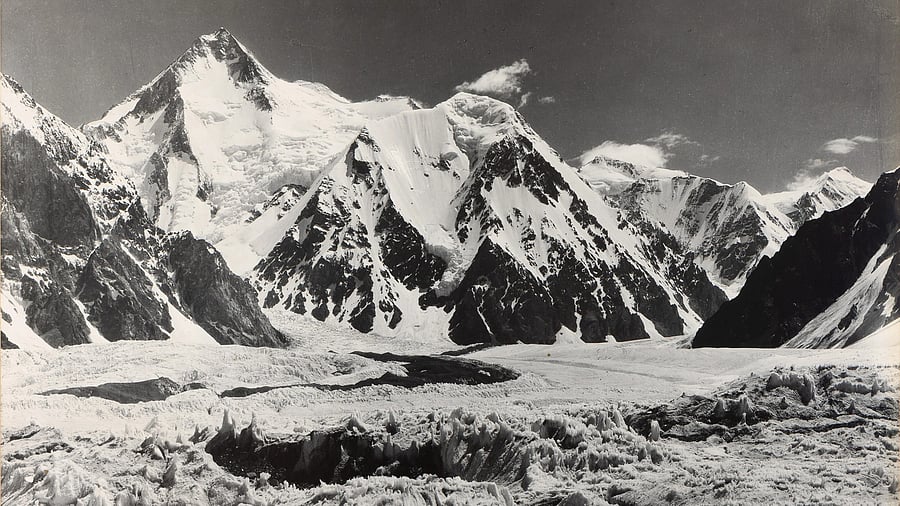
One of Sella's photographs.
Pic courtesy: DAG
Some photographs merely document a scene, while others transport you into the heart of a place. Vittorio Sella’s images fall into the latter category. At a time when mountaineering was still in its early days and photography required hauling heavy equipment up treacherous terrain, Sella’s work in the Himalayas stands as a testament to endurance, art, creativity and artistry. The book Vittorio Sella: Photographer in the Himalaya celebrates a man whose lens brought the world closer to some of the world’s most remote and breathtaking landscapes.
Born in 1859, Sella was not only a photographer but also an explorer, an artist and a storyteller of the mountains. His journeys into the Himalayas were gruelling; they demanded immense physical and technical skill. He carried close to 30 kg of camera equipment through snow-covered landscapes, often at altitudes where even survival was a challenge, especially with the nascent mountaineering equipment of the time. Yet, the images he produced are nothing short of mesmerising. This book compiles some of his most remarkable photographs, offering a window into his extraordinary expeditions and the conditions he faced. It includes a few pull-out panoramas of the peaks as well. What makes this collection so special is the way Sella’s photographs capture not just mountains but also their soul. His images reveal the grandeur of the peaks, the shifting moods of light and shadow, and the sheer vastness of the Himalayas. The book’s essays add depth to the visuals, offering insight into Sella’s collaborations with legendary explorers like the Duke of Abruzzi and his unwavering commitment to his craft, even as he captured the contrasts of many mountain ranges.
In today’s digital era, where we can shoot hundreds of photos from a trip to a park in a single day, Sella had to deliberate about every shot. Early cameras lacked viewfinders, forcing him to rely on intuition and experience to frame his compositions. Each image was a carefully considered effort, and the results, now masterpieces, stand as a testament to his remarkable skill and vision. The details in his images, the carefully composed frames and the dramatic contrasts create a sense of awe. His mastery of panoramic photography was groundbreaking for his time. He meticulously stitched together multiple images to showcase entire mountain ranges, such as a six-photo composition of the Kanchenjunga range from 1899.
The sepia tones of his early photographs lend them a timeless quality, evoking a sense of nostalgia for an era of true exploration.
Beyond the landscapes, Sella’s lens also captured the life of remote Himalayan villages. His photographs show people engaged in a game of polo, monks standing outside Tibetan temples or monasteries and scenes of daily survival in the harsh mountain environment. These images in the book remind us that mountains are not just towering peaks; they are also homes to resilient communities shaped by their surroundings. Sella’s impact extended beyond his lifetime. His work deeply inspired the legendary photographer Ansel Adams, who once said that Sella’s images “move the spectator to a religious awe.” This sentiment is true as one flips through the pages of this book.
Sella’s devotion to capturing the sublime beauty of nature paved the way for generations of landscape photographers, proving that photography is not just about documenting a place, but is also about experiencing it. Vittorio Sella: Photographer in the Himalaya is an essential read, especially if you are a landscape enthusiast.
The book is a tribute to a man who found beauty in the harshest of places and whose images continue to inspire curiosity and a deep appreciation for the wildest landscapes on Earth.